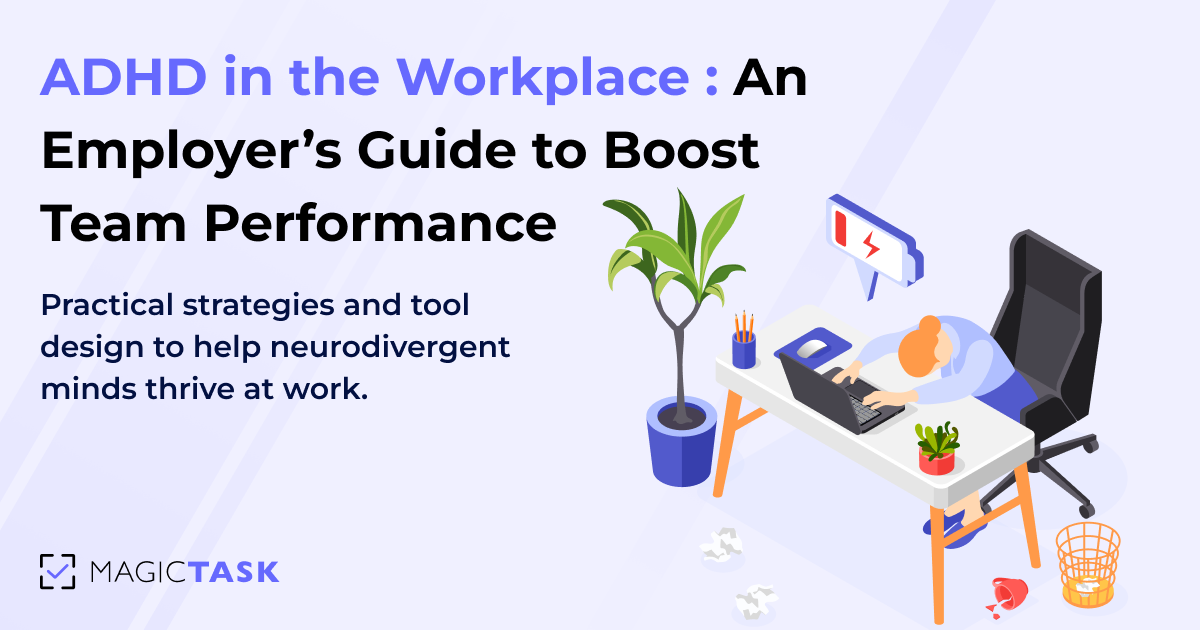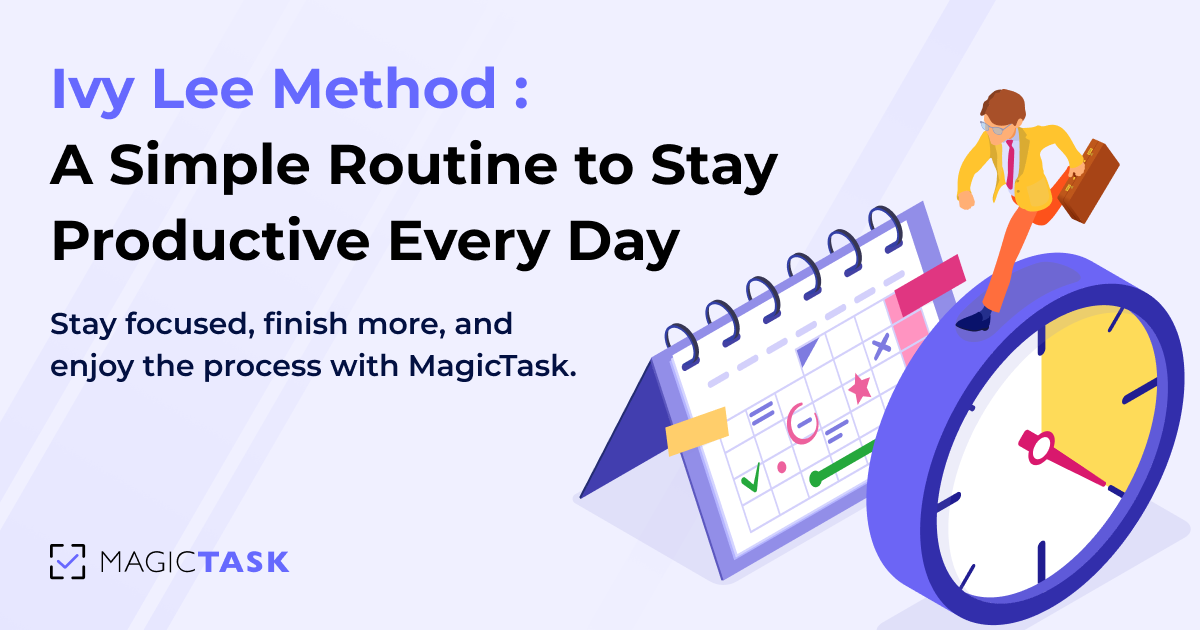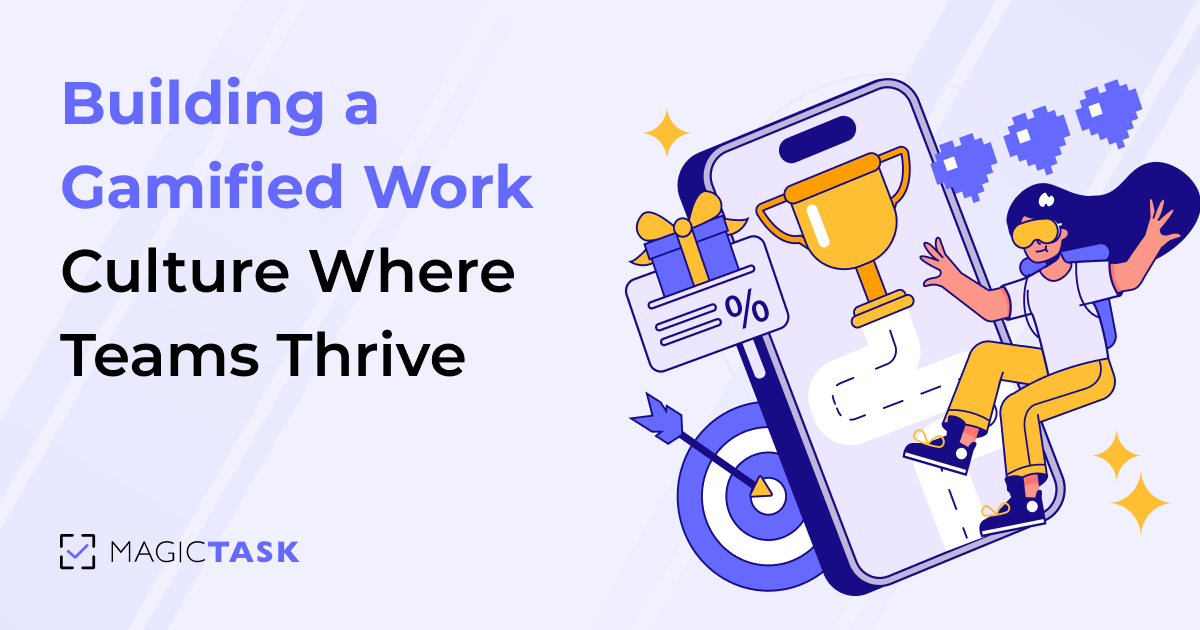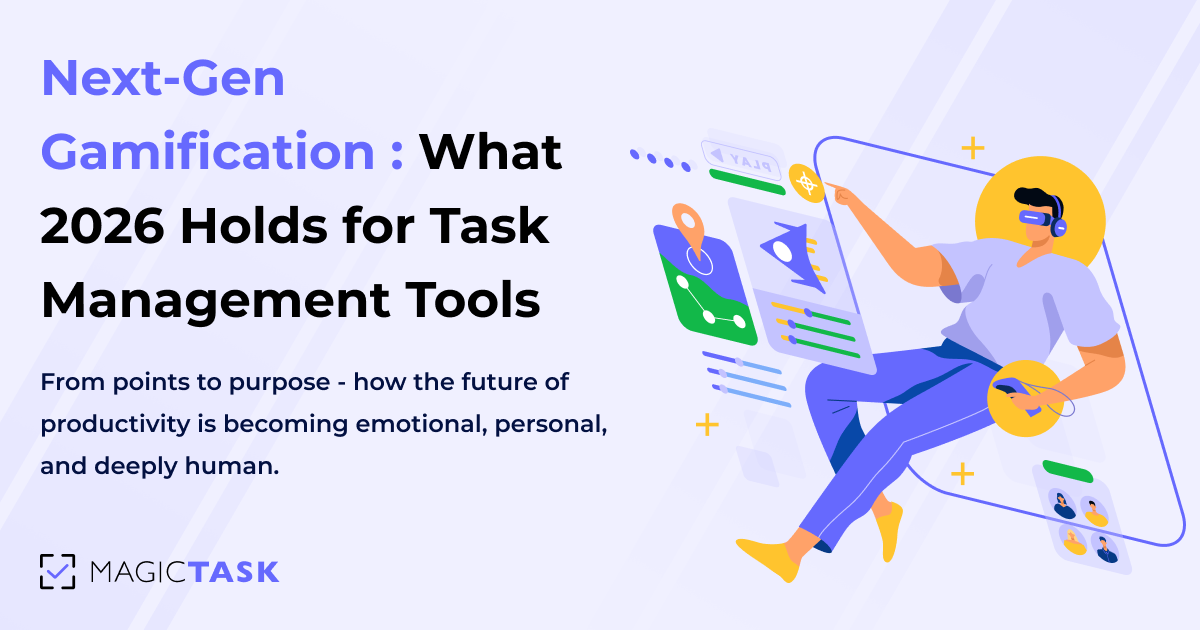10 Strategies to Promote Efficient Work Culture
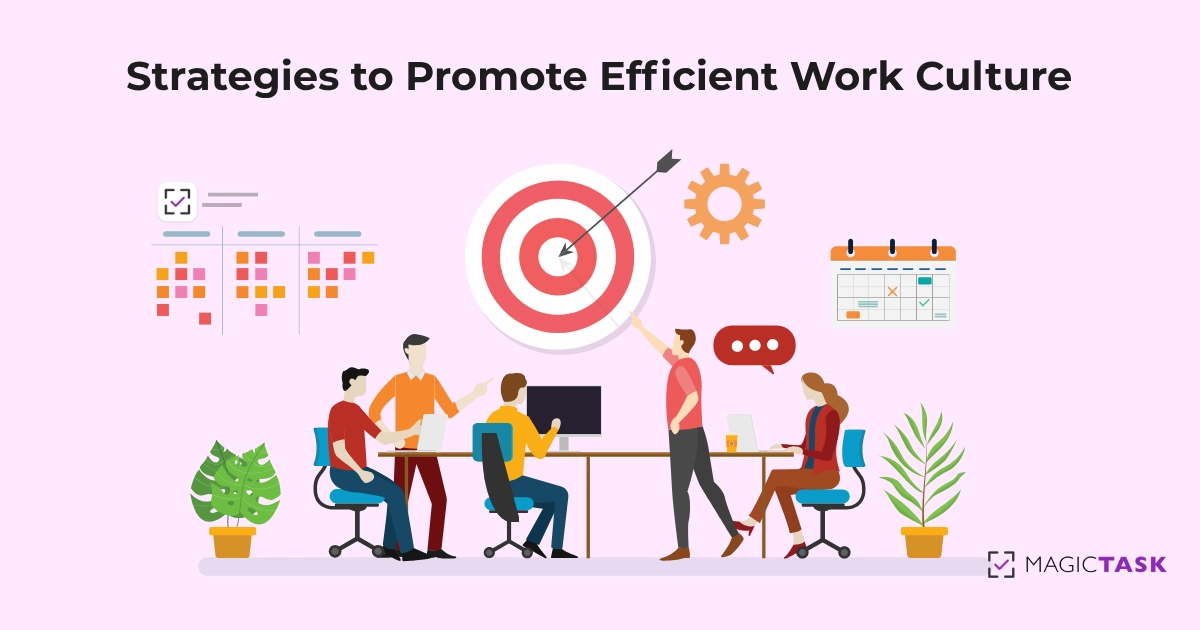
Is your team truly making the most of their workday? Or are they busy without really being productive?
No matter your industry or business size, one thing remains constant: the need for greater productivity. At the core of that is work efficiency—helping employees work smarter, not harder.
Yet, despite its benefits, a study found that the average worker is productive for less than three hours per day. Various factors can hinder work efficiency, but identifying the root cause is the first step toward improvement.
Through our experience building MagicTask—a productivity tool loved by everyone—we've discovered key strategies for fostering an efficient work culture and reclaiming valuable hours each week.
Let’s read on and, explore those strategies and learn the concept of working efficiently.
What is Work Efficiency?
Work efficiency involves completing tasks and goals with minimal time, effort, and resources, maximizing productivity. It ensures higher productivity without negatively impacting individuals' well-being and measures how effectively your team works.
To achieve this, focus on essential activities and eliminate unnecessary tasks or delays from the work process.
As an example of work efficiency, let's say you typically spend three to four hours compiling and preparing a monthly update report. Then, one day, you find ways to improve the work process with the help of new automation software and some new strategies.
As a result, you can now complete the same report in just two hours. This reduction in time for accomplishing the same task showcases an increase in your work efficiency.
Why Does Efficiency Matter at the Workplace?
Have you ever wondered how some teams accomplish more in less time while maintaining quality? The secret lies in work efficiency—but why is it so important?
Here’s why working efficiently matters at the workplace:
1. Accomplishing more – Efficient workflows help teams complete more tasks in less time, boosting overall productivity.
2. Increased profit margins – Inefficient processes, wasted time, and resources cost businesses money. Streamlining tasks reduces inefficiencies, in turn leading to less expenditure.
3. Improved Employee Satisfaction – Do your employees feel overwhelmed? When workflows run smoothly, employee stress goes down. This leads to higher job satisfaction and retention.
4. Better Quality Output – Working efficiently isn’t just about speed. It’s also about fewer errors and enhanced work quality.
5. Positive work culture - Efficiancy fosters a positive culture where employees feel motivated, collaborate effectively, and maintain a healthy work-life balance.
6. Competitive Advantage – In a fast-paced market, efficiency helps businesses stay agile, adapt to trends, and outperform competitors.
How efficient is your workplace? Identifying and improving inefficiencies can transform productivity, morale, and success.
Key Challenges in Maintaining Efficiency at Work
Every organization looks forward to improving work efficiency, and employees want to be more productive and do meaningful work. Yet, despite this, achieving work efficiency can feel challenging. Constant distractions disrupt focus and lead to unfinished projects and fragmented workflows.
The first step to improving efficiency is recognizing the key challenges that hinder productivity. Here are some of the most common obstacles in maintaining work efficiency.
1. Inefficient or no tool.
Your team can't be truly efficient even with the best intentions if your organization lacks the right tools.
Managing multiple stakeholders, processes, and projects requires digital tools designed for seamless collaboration. Without them, work remains fragmented, slowing productivity.
2. Lack of clear directions.
Unclear employee roles, targets, and timelines create confusion. They may lead to delays, missed deadlines, and wasted time correcting mistakes. Without clear direction, teams struggle to prioritize effectively.
Conflicting work priorities further result in poor time and resource management. This ultimately reduces efficiency and impacts overall output.
3. Insufficient support and guidance.
Employees still need ongoing support and guidance even when work expectations are clear. However, some may hesitate to ask for help, fearing they’ll seem incompetent.
This leads to wasted time, mistakes, and decreased efficiency. The solution? Foster a culture of continuous learning where employees feel encouraged to ask questions, seek guidance, and grow on the job.
4. Slow, inefficient work processes.
If your team spends too much time on administrative tasks instead of their core responsibilities, inefficient internal processes may be the reason for low productivity.
Complex rules, too many steps for simple tasks, and a cumbersome approval process can all slow productivity and hinder efficiency. Streamlining workflows is key to keeping your team focused on what truly matters.
5. Frequent endless meetings monopolizing work timing.
Modern workplaces are filled with distractions—open office spaces, endless app notifications, and an often-overlooked culprit: meetings.
Some days are packed with back-to-back meetings, leaving little time for meaningful work and a waste of valuable resources. Besides, short 30-minute gaps between meetings aren’t enough to dive back into tasks, making productivity slip away.
6. Multitasking.
While multitasking is a valuable skill, it can reduce efficiency. Constant task-switching creates mental lag, making it harder to focus. When employees feel pressured to respond to every email or notification, they get distracted by less important tasks—shifting focus away from high-impact, strategic work.
7. Employee disengagement.
Disengaged employees are less productive because they lack a strong connection to the company. In contrast, highly engaged teams see 21% higher productivity, according to Gallup.
Without a strong attachment to company goals, employees are less likely to put in their best effort, resulting in missed deadlines, decreased collaboration, and overall lower performance.
10 Strategies to Promote Efficiency at Work
While the best approach varies by person and situation, certain strategies consistently enhance work efficiency.
Improving efficiency requires strategic planning, technology, and a positive work culture. Here are 10 simple yet effective ways to boost productivity in your organization.
1. Develop Effective Collaboration.
Collaboration plays a key role in workplace efficiency but can disrupt productivity without structure. A quick request from a coworker can be as distracting as a notification, especially in remote settings.
Ensure everything is defined clearly—work expectations, communication channels, and mutual respect for each other’s time—to enable smooth teamwork. Without clear collaboration guidelines, employees are left to navigate teamwork on their own, leading to inefficiencies.
2. Stay Organized with the help of Task Management Tool.
Managing tasks through email and meetings is time-consuming and often leads to information loss and inefficiency. A task management tool keeps everything organized by providing an overview of task progress accessible anytime and anywhere.
With a centralized task management system like MagicTask, teams can track assignments, deadlines, and discussions without sifting through emails or messages. Moreover, such tools offer a visual workflow, ensuring accountability and smooth collaboration—whether in the office or remotely.
3. Use Asynchronous Communication to Eliminate Unnecessary Meetings.
Asynchronous video sharing helps explain tasks without scheduling meetings. Such pre-recorded videos work well for onboarding, presentations, and tutorials, allowing employees to watch, pause, and take notes at their own pace.
Tools like Zoom let teams record, share, and comment on videos, improving clarity and reducing repetitive explanations. Organizing these videos on a task board streamlines access, ensuring efficient collaboration without constant meetings.
4. Push back low-priority Tasks.
Just because you can do something doesn’t mean you should. Protecting your team’s time by pushing back on low-priority requests is key to meeting KPIs.
When you are overloaded with tasks that align with company goals, prioritize. Focus on what’s most impactful, say no to non-urgent tasks, and communicate openly with other stakeholders. Clear, timely responses help manage expectations and maintain efficiency.
5. Review and Refine Processes regularly.
Regularly reviewing and refining processes is key to maintaining efficiency. Simplify where possible—eliminate unnecessary steps, limit decision-makers, and ensure only essential stakeholders are involved.
If meetings or projects don’t add value to your team, speak up and focus on higher-impact work. While some processes, like legal or safety protocols, must remain thorough, efficiency can still be optimized through automation, team feedback, and better workload distribution.
6. Help Employees Set Clear Boundaries.
Saying no can be difficult, but taking on too much leads to inefficiency. Encourage employees to set boundaries and decline tasks that don’t align with priorities or capacity.
Whether they are already tackling a busy week or need time for personal development, there’s nothing wrong with turning down opportunities if they’re not helpful. This improves time management, reduces burnout, and allows them to focus on delivering quality work.
7. Plan for Success.
A solid project plan provides clarity on scope, KPIs, methods, and timelines. Documenting it in clear terms helps secure stakeholder buy-in and guides team execution.
Project management tools streamline planning by enabling real-time updates, centralized feedback, and quick stakeholder communication. Strategic resource allocation strengthens execution, keeping projects on track and within budget. Regularly reviewing your plan ensures alignment with KPIs, allowing timely adjustments for success.
8. Encourage Regular Breaks.
Encourage regular breaks to sustain productivity and prevent burnout. Short rest periods recharge energy, improve focus, and enhance performance.
Working longer doesn’t always mean better results—without rest, efficiency drops. Just like a muscle, the brain needs downtime to stay sharp. A well-rested team fosters a healthier, more productive work culture.
9. Use Technology to Automate Processes.
Using the right technology makes work easier and more efficient. Automate repetitive tasks like data entry and payroll to reduce errors and free up time for more valuable work.
Use project management, communication, and analytics tools to improve collaboration, decision-making, and organization. However, technology is only effective if employees know how to use it—proper training ensures teams maximize its benefits.
10. Keep Meetings Structured & Short.
Limit unnecessary meetings to keep work moving. Too many meetings can lead to rushed tasks and more mistakes. To stay efficient, only meet when necessary and always have a clear agenda shared in advance.
This ensures that the right people are present, everyone is prepared, and discussions stay focused. Agendas should include action items, key updates, discussion points, and relevant files. Sending them 24–48 hours ahead saves time and makes meetings more productive.
How Can MagicTask Help You Work Efficiently?
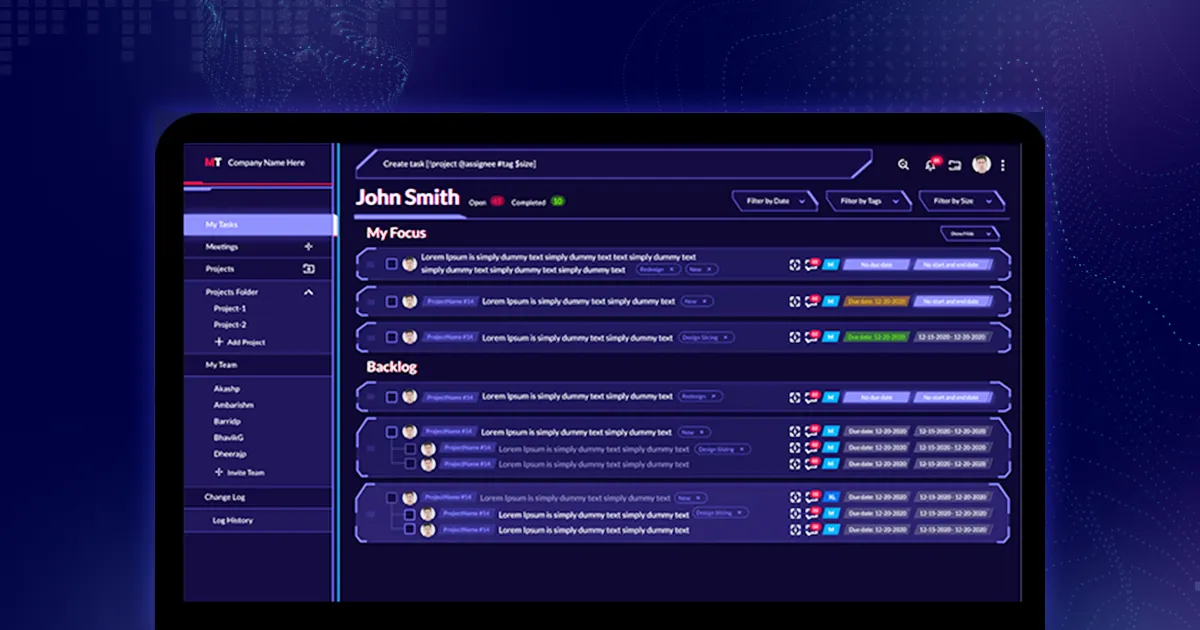
Is your team struggling with low productivity, duplicate efforts, or wasted time? Imagine a simple tool that helps you work more efficiently, even on complex projects.
With MagicTask, you and your team can maximize productivity and stay on track. It can help you turn chaotic workdays into structured, productive ones.
Here’s how it can help you work smarter.
1. Hyper-simplicity.
Companies tired of complicated productivity tools that slow down their teams find MagicTask just the right platform for their task management needs.
Why?
- MagicTask is built by eliminating cluttered interfaces and unnecessary features. This keeps things effortless and distractions-free.
- Unlike complex platforms, MagicTask allows your team to stay focused, collaborate easily, and get more done—faster. Users get to start quickly on a task, track it, and finish it off.
- With an intuitive UI and minimal features, task management becomes smooth, efficient, and even fun.
2. Centralized task management.
Understanding the difficulty of juggling between multiple platforms, MagicTask offers a centralized platform.
Benefits?
- It brings tasks related to sending emails, chats, sharing documents, task management, to-do lists, project management, notifying teams, etc, all under a single umbrella.
- With MagicTask, you can track projects, tasks, and files in real-time, ensuring your team has everything they need at their fingertips.
- No more lost information or miscommunication—just a seamless workflow.
3. Increased accountability.
If your team regularly misses deadlines and is unclear about their responsibilities, this can bring down efficiency.
- MagicTask boosts accountability by assigning clear tasks, tracking progress, setting deadlines, and ensuring everyone knows what needs to be done and when.
- MagicTask’s real-time updates eliminate the need for constant follow-ups, while task comments enable seamless feedback.
- So, there is no more guesswork—just a structured, efficient workflow.
4. Gamification features.
Gone are the days when fear and discipline drove productivity. Today, motivation is key—and that’s where MagicTask comes in.
- MagicTask makes work feel like a game.
- MagicTask uses instant feedback and rewards to keep your employees motivated. Just as in video games, completing tasks triggers a satisfying loop of progress and gratification, making productivity both engaging and addictive.
- With MagicTask's gamification features, work becomes competitive but engaging and rewarding. Employees earn points on task completion, level up, and achieve milestones, making even the most routine tasks exciting.
Conclusion.
Work efficiency isn’t about doing more—it’s about working smarter. Staying organized with the right tools creates a productive environment and keeps your team focused. Juggling multiple platforms for tasks and communication only slows you down. It wastes time, creates confusion, and kills momentum.
MagicTask simplifies everything with a centralized task management system. No more switching between tools or losing track of important work.
Just seamless collaboration, better productivity, and a smoother workflow. Ready to level up your team’s efficiency? Sign up today and see the difference!
